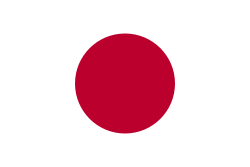Japan Unveils Advanced Railgun to Counter Hypersonic Missiles
 Japan
JapanScientists at Osaka University have developed a groundbreaking AI model that can estimate a person's biological age using just five drops of blood. The model analyzes 22 key steroid hormones and their interactions to provide a nuanced assessment of health, distinguishing between chronological age and biological aging processes.
Published in the journal Science Advances, this study marks a significant advancement in personalized health management, potentially allowing for earlier detection of age-related health risks and customized interventions. "Our bodies rely on hormones to maintain homeostasis, so we thought, why not use these as key indicators of aging?" explained Dr. Qiuyi Wang, co-first author of the study.
The research revealed concerning implications of stress on aging. Specifically, it found that when cortisol levels—a hormone associated with stress—doubled, biological age increased by approximately 1.5 times. "Stress has a measurable impact on biological aging," noted Professor Toshifumi Takao, a corresponding author of the study. This AI-powered model could lead to personalized wellness programs and early disease detection, ushering in a new era of health monitoring strategies.
 Japan
Japan Japan
Japan Japan
Japan